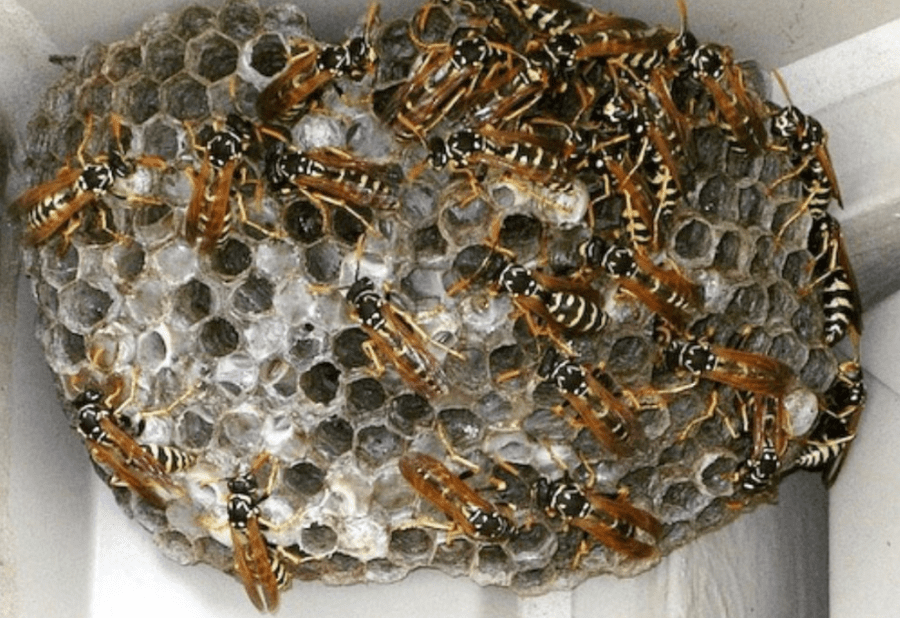Wasps, hornets and yellowjackets are common outdoor pests that can become a nuisance during outdoor dinners and activities. These insects can also pose a danger for people who have bee allergies. However, wasps, hornets and yellowjackets are more dangerous and unpredictable than honey bees. Unlike bees, wasps and yellow jackets can sting repeatedly without dying.
Photo by Kilauea Pest Control – Discover home design design inspiration
This makes them particularly dangerous for people who are allergic to their venom. It is incredible, but hundreds (perhaps thousands) of people only in the United States die each year from allergic reactions to the venom of these insects.
But anyway, wasps although annoying, should be thought of as beneficial insects. They prey mainly on other insects, many of which are pests. In general, they avoid human activity and should only be considered a nuisance when nesting near homes or high traffic areas.
Paper wasps, hornets and yellowjackets construct nests of a paper-like material which is a mixture of finely chewed wood fragments and salivary secretions of the wasps. The best way to prevent unpleasant encounters with social wasps is to avoid them. If you know where they are, try not to go near their nesting places.
Wasps can become very defensive when their nest is disturbed. However, they are not as aggressive as yellowjackets or hornets, and can be eliminated rather easily with a wasp and hornet spray sold at most grocery and hardware stores. It is best to spray the nest at night since most of them will be home around that time.
Once you are confident they have all been killed, you can wrap the nest in a plastic bag and throw it in the trash. This will prevent secondary problems from carpet beetles, ants and other scavenging insects. You can use also, citrus oil extract in a spray bottle. It will kill them on contact.
Hornets are far more difficult and dangerous to control than paper wasps. The nests resemble a large, inverted tear-drop shaped ball which typically is attached to a tree, bush or side of a building. Hornet nests may contain thousands of wasps which are extremely aggressive when disturbed. The nests are often located out of reach and removal is best accomplished by a professional pest control firm.
Yellowjackets are another dangerous wasp encountered around homes and buildings. Nests are often located underground in an old rodent burrow, beneath a landscape timber, or in a rock wall or wall of a building. If the nest can be located, it can usually be eliminated by carefully applying a wasp spray insecticide into the nest opening.
Integrated Pest Management (IPM) – Eco-Friendly Solutions (howtobuildahouseblog.com)
The best thing is prevention:
Yellow jackets are attracted to many human and pet foods and drinks, so keep food covered when outdoors. They also like human sweat, cologne and anti-perspirant. Unlike honeybees, each yellow jacket can sting numerous times, so even one yellow jacket poses significant danger.
1| Check your house for unsealed vents, torn screens, cracks around windows and door frames and open dampers. Observe the flight path of a wasp, especially in the morning, which may reveal the entry/exit point. Seal their entry points.
2| Any food left outdoors, such as pet food, picnic scraps, open garbage containers or uncovered compost piles should be removed or covered. Wasps imprint food sources, and will continue to search an area for some time after the food has been removed. Be sure also, to cover drinks and open food containers, keep a lid on the compost and avoid walking barefoot near fruit trees. Remove any fallen fruit rotting on the ground.
3| Avoid wearing bright colors and avoid swatting. DO NOT squash a wasp. When a wasp is squashed, a chemical (pheromone) is released which attracts and incites other nearby wasps.
4| Minimize use of perfumes and other strong scents. In the later part of the summer, wasps are attracted to sweet smells.
5| Wasps and yellow jackets are territorial insects, and typically they will not build a nest near another nest. Take advantage of this fact and repel these insects from your home by hanging a false wasp nest under your deck or in an area where you have previously found a nest.
Homemade traps:
Homemade traps are an effective way to repel wasps and yellow jackets from one area by luring them to another area.
Cut the top off a plastic soda bottle and insert the top upside down into the body of the bottle to create a funnel. Fill the bottle with several inches of sugar water, and hang it from a tree or post around your home.
Wasps will be attracted to the sweetness of the sugar water and, once they enter the trap, they will be unable to get out. Add 1/4 cup of vinegar to the mixture in the bottle to discourage honeybees from entering the trap, as these insects are beneficial in the garden environment and should not be killed.
Natural repellents:
Yellow jackets dislike the scent of citronella, an essential oil derived from the citronella plant native to Java, Central America and Haiti. Light citronella candles at picnics.
Also, to mask the attractive scent of sweat, apply a lotion containing citronella oil to exposed skin.

